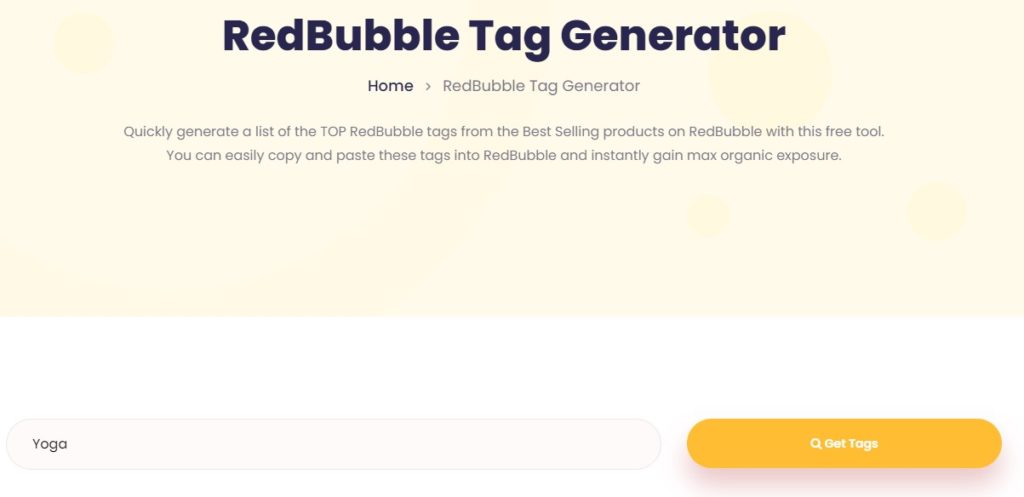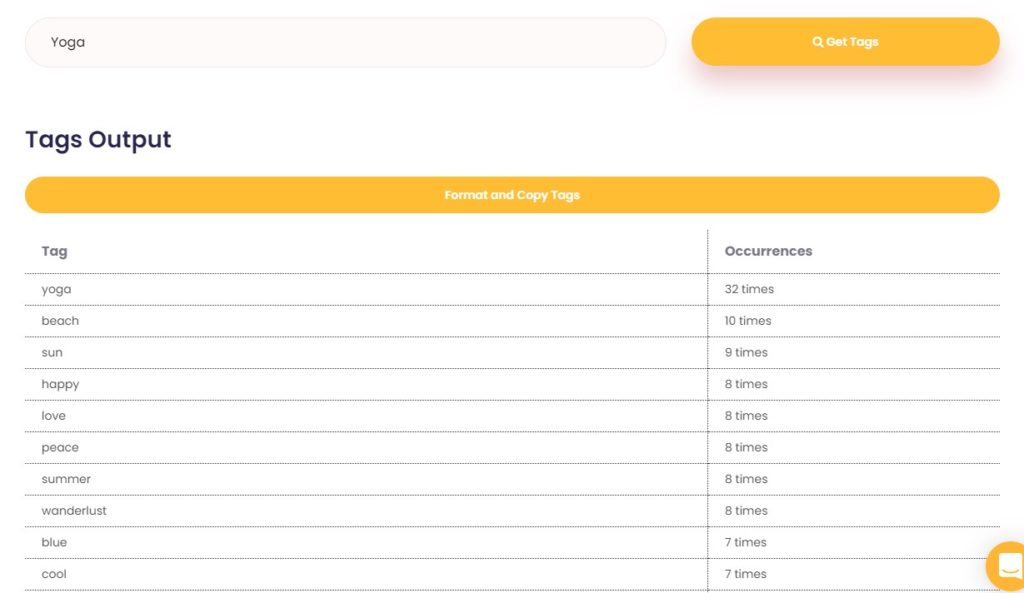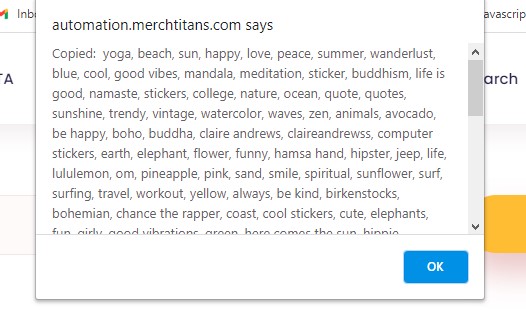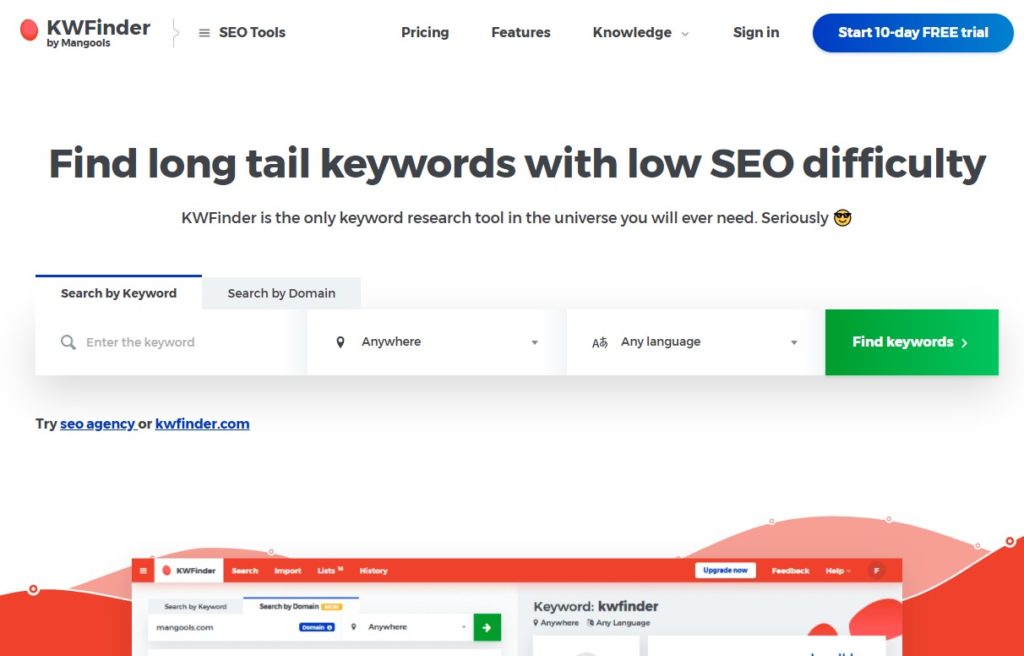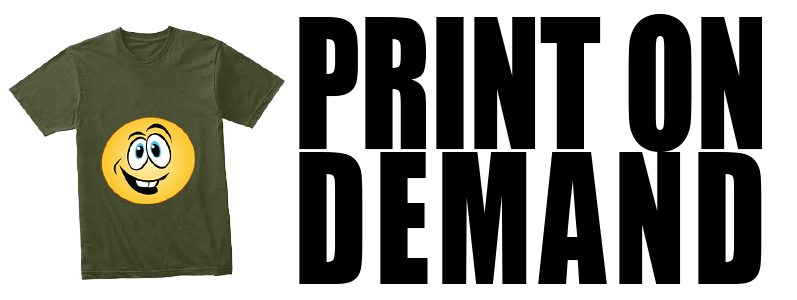Recently, a substantial number of accounts across numerous Print on Demand services have been cancelled. Print on Demand services like Redbubble, Teespring, and Merch by Amazon have started taking designs down and suspending or cancelling accounts, why is this happening? What are the reasons behind all of these the cancellations?
The second most common question I get on social media is “why was my account suspended” (right behind how can I get more sales on my Print on Demand account?). This is a common occurrence this happens a couple times a year; the Print on Demand services crack down on designs that infringe on copyright. Sometimes they will take down a couple of designs on any account, other times, for the heavy offenders, they will cancel accounts outright. Often the offender has no idea why their account was cancelled. Quite often, then answer is simply copyright or trademark infringement. If your account was taken down for what you feel is no reason, let’s talk about some of the items that could be included in your designs which infringe on copyright without you even realizing it. First, we will start with the basics, what is copyright?
Legal stuff
Before we go any further, I need to point out that I am not a lawyer, and none of the content in this article should be considered legal advice. My experience with copyright law is derived from work I have done licensing and working with intellectual properties from large companies like Warner Bros., Disney, 20th Century Fox and others. That being said, take this article as it is intended to be viewed as information accumulated from years working with intellectual properties.
It should also be clearly noted that any mention of licensed properties in this article are for informational purposes only, and do not imply license, ownership or use rights of any kind for the material mentioned herein. This article is not being monetized, it is was created for educational purposes for anyone struggling with copyright and Print on Demand services.
Copyright
Copyright is defined as: the exclusive legal right, given to an originator or an assignee to print, publish, perform, film, or record literary, artistic, or musical material, and to authorize others to do the same. This can be a bit confusing, but the best way I can explain it is to pass on the sage advice I was given by a well-known copyright attorney: “If you didn’t create it, don’t use it”. Companies spend tens of millions of dollars developing their intellectual properties and they aren’t going to let someone creating Print on Demand designs profit from their work. Plain and simple, if you knowingly use someone else’s property in your design you could be opening yourself up to all sorts of trouble possibilities from just having your design taken down or your account suspended to losing your home and car in litigation.
The simple truth is that while its cool to have that Mandalorian helmet or Nike swoosh included in your design, by using it you are profiting from the trademarked property of another person or corporation. What you may not realize is when you are working with an intellectual property owner (in the case of Mandalorian, Disney), guidance and guidelines on how the property can be used are provided, and the property owner has final say over your execution of that design. I recently saw a shirt design that was being promoted through pay advertisement on Facebook that had a Baby Yoda illustration with a pot leaf, and another design had a shirt featuring Baby Yoda drinking a Mountain Dew riding a Nike Swoosh. It boggles my mind to consider the amount of approvals that would have gone into creating a legitimate design with Yoda, the Nike swoosh and Mountain Dew. Three large companies working together like this would certainly never happen on anything less than a major advertising campaign. As for the Baby Yoda and pot leaf design, Disney has incredibly strict guidelines about how their properties are used and they would never approve a design with alcohol or drugs included. If there is any design they would actively pursue, it would be the one with the drugs as they would not want their property affiliated with drug use in any way. The only light in this tunnel is that designers who use multiple copyrighted properties in their designs makes it much easier for Print on Demand services to identify designs which infringe on copyright.
My Guidelines
I use simple guidelines for materials I create for my designs, if I made it myself (not copied from a picture or other source of any kind) then I can use it in my designs. If someone spent money or time to create something, then I stay away. Here is a fairly broad list of things not to use in your designs and why:
Company names
Any recognizable company logo applies here. I remember seeing a meme that was made into a shirt then quickly taken down. The Scott bathroom tissue brand was coupled with the Taco Bell logo and included text saying “a match made in heaven” or something similar. Funny, but not something either brand would ever approve of.
Company logos
Even if you don’t have the associated text with the logo, it is still off limits. My example earlier of the Baby Yoda riding the Nike swoosh is a good one. The word Nike was not included, but the shoosh is widely known as the representative logo for Nike. It should also be pointed out that the typeface or font used by most corporations is copyrighted or trademarked as well. Make sure that you are using fonts in your designs that can be used in commercial applications.
TV show names
The Walking Dead, is a very tempting theme to use, especially around Halloween (or when a new season is about to start) to get some quick sales. The show name, stories and logos are all owned by AMC Networks. They spent a ton of money to create and market this show, and you did not. Don’t use it in your designs.
TV show characters
Even vague references to show characters can get your designs removed from the Print on Demand services. This includes catch phrases or other words associated with the show’s characters. Shirt designs with someone falling down with D’oh! Will be quickly removed not only because the phrase was copyrighted and used by Homer Simpson, but Disney now owns all the FOX intellectual properties, and Disney is notoriously good at finding trademark infringement and sending out cease and desist messages. If you think you can’t copyright a word you can, and you would lose a court case in a heartbeat when they saw the context you used the word in for your design.
Movie characters
The Yoda character form the Star Wars franchise has a very specific way of saying things, and while that form of speech isn’t copyrighted, some sort of space themed design with “off you must F@#$” would easily be recognizable as the way the character would speak. You used the phrase (even though it is something that he would not say) in context (space setting) and that is what would get you into trouble. Disney also owns all the Star Wars properties so they would get you quickly.
Song names and Song lyrics
I recently saw a design which featured imagery and lyrics from the Eagles song Hotel California the problem is that song lyrics are copyrighted just like the music is. If you didn’t write and record the song, then don’t use it in your designs. But you might be thinking that people would not be interested in the lyrics to a song that I wrote and the shirt would not/never sell. Exactly – are we starting to see the bigger picture now?
The 10% rule
There is an old wives’ tale that says if you change 10% of the design no matter what it is you can use it. This is a terrible belief and is not worth gambling your car or home over. If you didn’t create it, don’t use it.
Where does fan art come into the equation?
Fan art is a bit of a fuzzy area. Many Print on Demand services partner with different brands allowing their creators to submit designs featuring the company’s property for consideration. This is very different than taking a photo of Baby Yoda, drawing it and assuming that because you made it and it is “fan art” you are ok. The image is still a derivative work of an owned copyrighted intellectual property and your design will likely be taken down.
Can I contact companies to request legitimate use of the property?
Of course you can. Start by securing a trademark or copyright attorney and they will have the information to contact the property holder. They will negotiate on your behalf and you can run forward with all due haste to make your design and begin the approval process with the property owner. Oh, by the way you might find it a bit larger investment than you are willing to make considering you are only making a few dollars royalty per shirt sale.
Right to privacy and right to publicity
This primarily has to do with sports figures and celebrities. A few years ago, The Chive started using Bill Murray as a focus of many of their shirts. He worked with them and his likeness was licensed. He spent a long time working on his reputation and building his celebrity brand. This is why I could not take a picture form the internet and make shirts featuring Bill Murray even though he is considered a public figure. The only exception to this is political candidates – especially during a campaign season. In many cases it is appropriate to make shirts with Biden or Trump 2020 on them, but the shirts cannot use the democratic or republican party logos because those are trademarked. Copyright gets a bit grey in areas of use which is why I tend to steer away from copyrighted or even potentially copyrighted materials in my designs. The simplest terms I can put it in is: If a company or person creates a brand, you cannot use that to profit from.
Why are some designs that infringe on copyright still up?
We have spent this entire article talking about not using copyrighted property in designs, so how come there are so many designs on Print on Demand services which clearly have copyrighted material in them? The plain and simple answer is luck, the person who put those designs up on their account just has not been caught yet. Smaller accounts will probably take longer to get their designs removed but be sure they will eventually. Whether it is the owner of the property asking for the designs to be removed or the automated algorithms of the Print on Demand services catching the offender, they will get caught.
How to protect yourself
This all sounds scary and now I am betting you are concerned about what you can and cannot use in your designs. Copyright is a crazy thing; they do not have to prove you stole the materials unless it goes to court. Even then, the court precedents clearly lean toward the copyright owner and not the infringer. Copyright lawyers will not often take cases they are sure will be a slam dunk in terms of winning. If you are looking at litigation for infringing copyrights rest assured, they have ample evidence to prove not only their ownership of the intellectual property, but how when and what you did to infringe on their property. Here are some things you can do to protect yourself when creating your designs:
Check your sources.
If you are using a photo pr a portion of a photo asset, be 100% sure you know where the asset came from. Do not just do a google search and grab an image from a website thinking it is free to use. Do not use stock photography, most of those images have strict usage guidelines. The safest thing you can do is use images which are in the creative commons meaning the owner has freely given permission to allow anyone to use the images or portions of the image in any work. Be aware that everyone has access to these images, and everyone uses them for all sorts of advertising, campaigns and other things on the internet and media. The only way to be 100% sure of a photo asset that you need for a design is to create it yourself. I have a strict policy about using work not created by me, I don’t. If I need an illustration or a photo for a design, I make it myself or shelve the idea until later when I can come up with an idea to create the design without using other’s assets.
Protecting your copyright
Crating something (like a shirt design) comes with implied copyright. You don’t have to register your copyrights (but many do including myself) and if someone takes your design and uploads it to their account many times all you have to do is send an email to the Print on Demand service with your information about date of publish and they will honor your claim and remove the copycat. Many Print on Demand have a link at the bottom of the page where you can submit a copyright complaint. The process is relatively simple and painless. If you took the time to make it, and someone else is profiting off it then it is up to you to enforce your rights. With as rampant as outright thievery is in the Print on Demand game, you have to constantly keep your eyes open for people “borrowing” your work to sell as their own.
What about fiverr?
What if you don’t have graphic design abilities? Or you are a terrible photographer? There are websites like fiverr that have artists ready and waiting to make designs or assets for you. Just be aware that you need to own the rights outright. Technically you hire someone to make a cute bear picture then use that picture to make a million shirts the person who created that cute bear still own the copyright unless (like on fiverr) you pay the person and commission them as a work for hire. Make sure to have your paperwork and proof readily available in case there are any questions to your ownership of the design in question.
Conclusion
There you have it! Did you learn anything? Did this article help you in any way? Because this article mentions so many copyrighted phrases and materials, I am not monetizing it so please help out by spreading the word about this blog and sharing this article in any Print on Demand forums you might belong to. Sharing information like this helps to make the Print on Demand business more legitimate.
Now get out there and get designing!

